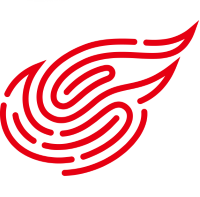Boombit SA
WSE:BBT
Profitability Summary
Boombit SA's profitability score is 50/100. We take all the information about a company's profitability (such as its margins, capital efficiency, free cash flow generating ability, and more) and consolidate it into one single number - the profitability score. The higher the profitability score, the more profitable the company is.
Score
We take all the information about a company's profitability (such as its margins, capital efficiency, free cash flow generating ability, and more) and consolidate it into one single number - the profitability score. The higher the profitability score, the more profitable the company is.
We take all the information about a company's profitability (such as its margins, capital efficiency, free cash flow generating ability, and more) and consolidate it into one single number - the profitability score. The higher the profitability score, the more profitable the company is.
Score
Score
Past Growth
To be successful and remain in business, both growth and profitability are important and necessary. Net Income growth is often seen as a sign of a company's efficiency from an operational standpoint, but is influenced heavily by a company's goals and challenges and should therefore be assessed in conjunction with other metrics like revenue and operating income growth.
Margins
Profit margins represent what percentage of sales has turned into profits. Simply put, the percentage figure indicates how many cents of profit the company has generated for each dollar of sale.
Profit margins help investors assess if a company's management is generating enough profit from its sales and whether operating costs and overhead costs are being contained.
Earnings Waterfall
Boombit SA
|
Revenue
|
229.8m
PLN
|
|
Cost of Revenue
|
-199.9m
PLN
|
|
Gross Profit
|
29.9m
PLN
|
|
Operating Expenses
|
-23.9m
PLN
|
|
Operating Income
|
6m
PLN
|
|
Other Expenses
|
6.6m
PLN
|
|
Net Income
|
12.6m
PLN
|
Margins Comparison
Boombit SA Competitors
| Country | Company | Market Cap |
Gross Margin |
Operating Margin |
Net Margin |
||
|---|---|---|---|---|---|---|---|
| PL |
B
|
Boombit SA
WSE:BBT
|
108.3m PLN |
13%
|
3%
|
5%
|
|
| US |
A
|
Activision Blizzard Inc
LSE:0H8X
|
74.1B USD |
70%
|
26%
|
25%
|
|
| SG |

|
Sea Ltd
NYSE:SE
|
67.8B USD |
42%
|
2%
|
1%
|
|
| JP |

|
Nintendo Co Ltd
TSE:7974
|
10.9T JPY |
57%
|
26%
|
23%
|
|
| CN |

|
NetEase Inc
NASDAQ:NTES
|
64B USD |
63%
|
27%
|
26%
|
|
| US |

|
Roblox Corp
NYSE:RBLX
|
43.4B USD |
78%
|
-35%
|
-31%
|
|
| US |

|
Electronic Arts Inc
NASDAQ:EA
|
37.6B USD |
79%
|
21%
|
14%
|
|
| US |

|
Take-Two Interactive Software Inc
NASDAQ:TTWO
|
32.6B USD |
57%
|
-9%
|
-66%
|
|
| JP |

|
Konami Holdings Corp
TSE:9766
|
1.9T JPY |
47%
|
24%
|
18%
|
|
| JP |
N
|
Nexon Co Ltd
TSE:3659
|
1.8T JPY |
63%
|
29%
|
14%
|
|
| KR |

|
Krafton Inc
KRX:259960
|
15.3T KRW |
0%
|
43%
|
31%
|
Return on Capital
Return on capital ratios give a sense of how well a company is using its capital (equity, assets, capital employed, etc.) to generate profits (operating income, net income, etc.). In simple words, these ratios show how much income is generated for each dollar of capital invested.
Return on Capital Comparison
Boombit SA Competitors
| Country | Company | Market Cap | ROE | ROA | ROCE | ROIC | ||
|---|---|---|---|---|---|---|---|---|
| PL |
B
|
Boombit SA
WSE:BBT
|
108.3m PLN |
15%
|
9%
|
7%
|
8%
|
|
| US |
A
|
Activision Blizzard Inc
LSE:0H8X
|
74.1B USD |
11%
|
8%
|
9%
|
13%
|
|
| SG |

|
Sea Ltd
NYSE:SE
|
67.8B USD |
1%
|
0%
|
3%
|
1%
|
|
| JP |

|
Nintendo Co Ltd
TSE:7974
|
10.9T JPY |
13%
|
11%
|
14%
|
29%
|
|
| CN |

|
NetEase Inc
NASDAQ:NTES
|
64B USD |
22%
|
15%
|
21%
|
40%
|
|
| US |

|
Roblox Corp
NYSE:RBLX
|
43.4B USD |
-659%
|
-17%
|
-38%
|
-30%
|
|
| US |

|
Electronic Arts Inc
NASDAQ:EA
|
37.6B USD |
14%
|
8%
|
15%
|
11%
|
|
| US |

|
Take-Two Interactive Software Inc
NASDAQ:TTWO
|
32.6B USD |
-51%
|
-26%
|
-4%
|
-4%
|
|
| JP |

|
Konami Holdings Corp
TSE:9766
|
1.9T JPY |
16%
|
12%
|
19%
|
22%
|
|
| JP |
N
|
Nexon Co Ltd
TSE:3659
|
1.8T JPY |
6%
|
5%
|
12%
|
13%
|
|
| KR |

|
Krafton Inc
KRX:259960
|
15.3T KRW |
14%
|
11%
|
18%
|
23%
|
Free Cash Flow
Free cash flow (FCF) is the money a company has left over after paying its operating expenses and capital expenditures. The more free cash flow a company has, the more it can allocate to dividends, paying down debt, and growth opportunities.
If a company has a decreasing free cash flow, that is not necessarily bad if the company is investing in its growth.














































 You don't have any saved screeners yet
You don't have any saved screeners yet
